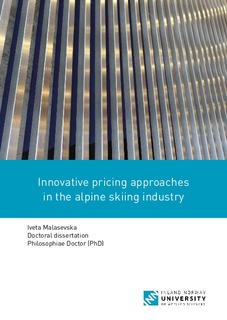| dc.description.abstract | The tourism industry is one of the fastest growing business sectors in the world. Over
recent years, mountain tourism has become a more and more important part of this
growth. This PhD thesis focuses on the alpine skiing industry, which is one of the categories
of mountain sport tourism with the strongest financial influence in the mountain
regions. Alpine skiing is an extremely competitive industry that has experienced stagnation
trend in recent years. Therefore, it is important to examine factors that may have
positive effects on the performance of ski resorts.
Innovation is fundamental in order to realize the potential of the alpine skiing sector
and to ensure sustainable business growth. For many ski resorts, innovation is a necessary
condition for survival in a fiercely competitive environment. In other words, the
competitiveness of ski resorts depends on their ability to innovate.
The overall purpose of this PhD thesis is twofold. First, the thesis aims to increase knowledge
about factors that affect alpine skiing demand and the price for alpine ski passes.
Second, it aims to provide new knowledge about how the alpine skiing industry can use
innovative pricing approaches to achieve competitive advantage. This is one of the first
studies to contribute to the research-based knowledge on innovative pricing approaches
in the alpine skiing industry.
In general, the demand for alpine skiing exhibits strong variation. Hence, during periods
with low demand, there is unused capacity. This thesis argues that one way to exploit
unused capacity in the low-demand periods is to use innovative pricing strategies.
Specifically, the findings of the appended research articles suggest that ski resorts can
increase profitability and deal with fluctuations in demand by implementing the following
pricing approaches: (1) variable pricing based on seasonality and (2) a dynamic
pricing approach based on different weather scenarios.
In addition, this thesis provides empirical evidence on the price–quality relationship at
ski resorts and discusses practical implications for ski resorts’ managers. Possible directions
for future research on innovative pricing approaches in the alpine skiing industry
are also included for interested readers. | nb_NO |
